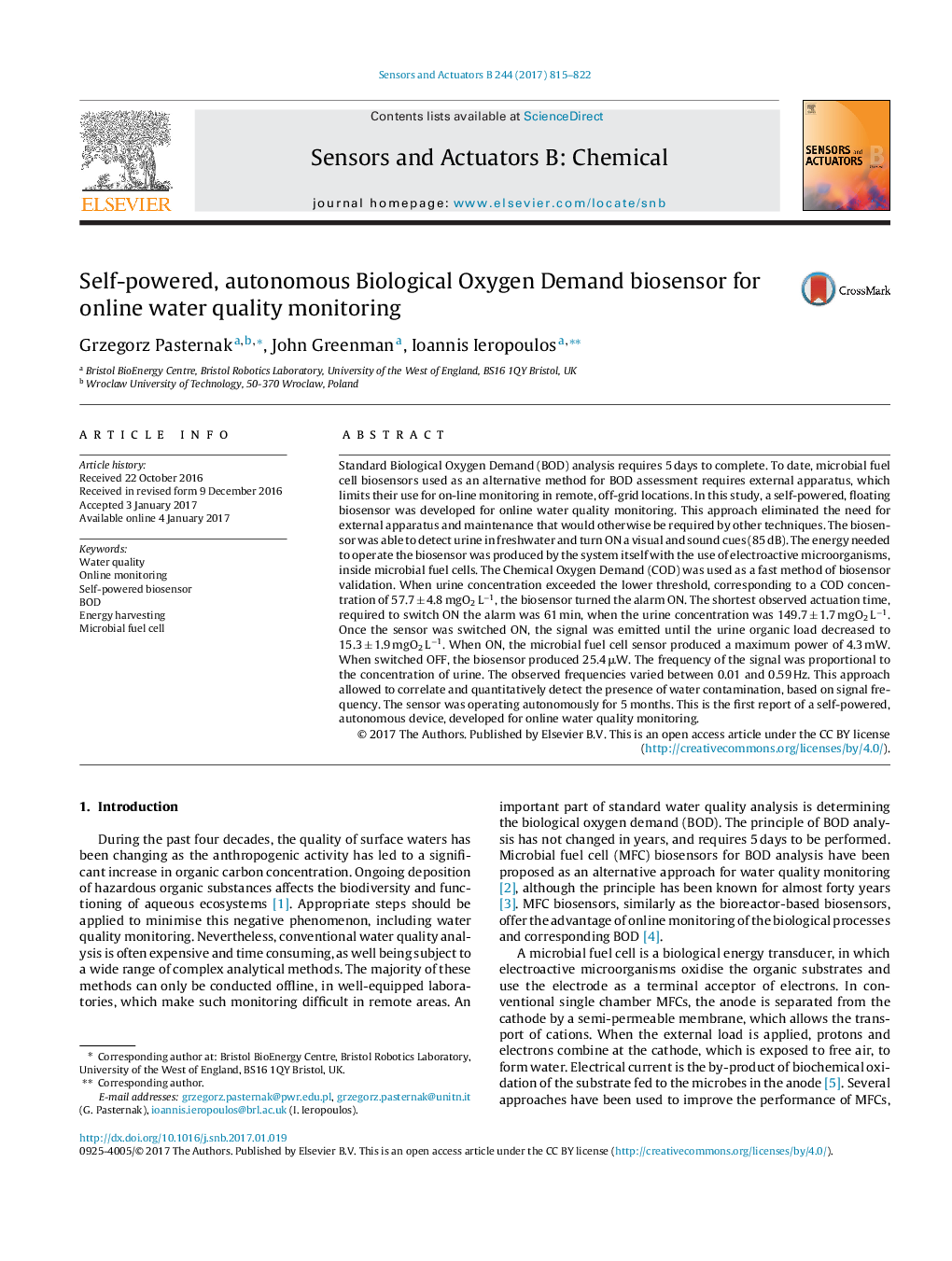| کد مقاله | کد نشریه | سال انتشار | مقاله انگلیسی | نسخه تمام متن |
|---|---|---|---|---|
| 5010047 | 1462047 | 2017 | 8 صفحه PDF | دانلود رایگان |
- First report of an autonomous, self-powered MFC biosensor for online monitoring.
- BOD detection capability was demonstrated with urine as the exemplar substrate.
- Frequency of the biosensor signal was dependent on contaminant concentration.
- Biosensor has been operating continuously for 150Â days.
- This approach opens a new direction for developing off-grid biosensors.
Standard Biological Oxygen Demand (BOD) analysis requires 5 days to complete. To date, microbial fuel cell biosensors used as an alternative method for BOD assessment requires external apparatus, which limits their use for on-line monitoring in remote, off-grid locations. In this study, a self-powered, floating biosensor was developed for online water quality monitoring. This approach eliminated the need for external apparatus and maintenance that would otherwise be required by other techniques. The biosensor was able to detect urine in freshwater and turn ON a visual and sound cues (85 dB). The energy needed to operate the biosensor was produced by the system itself with the use of electroactive microorganisms, inside microbial fuel cells. The Chemical Oxygen Demand (COD) was used as a fast method of biosensor validation. When urine concentration exceeded the lower threshold, corresponding to a COD concentration of 57.7 ± 4.8 mgO2 Lâ1, the biosensor turned the alarm ON. The shortest observed actuation time, required to switch ON the alarm was 61 min, when the urine concentration was 149.7 ± 1.7 mgO2 Lâ1. Once the sensor was switched ON, the signal was emitted until the urine organic load decreased to 15.3 ± 1.9 mgO2 Lâ1. When ON, the microbial fuel cell sensor produced a maximum power of 4.3 mW. When switched OFF, the biosensor produced 25.4 μW. The frequency of the signal was proportional to the concentration of urine. The observed frequencies varied between 0.01 and 0.59 Hz. This approach allowed to correlate and quantitatively detect the presence of water contamination, based on signal frequency. The sensor was operating autonomously for 5 months. This is the first report of a self-powered, autonomous device, developed for online water quality monitoring.
101
Journal: Sensors and Actuators B: Chemical - Volume 244, June 2017, Pages 815-822
